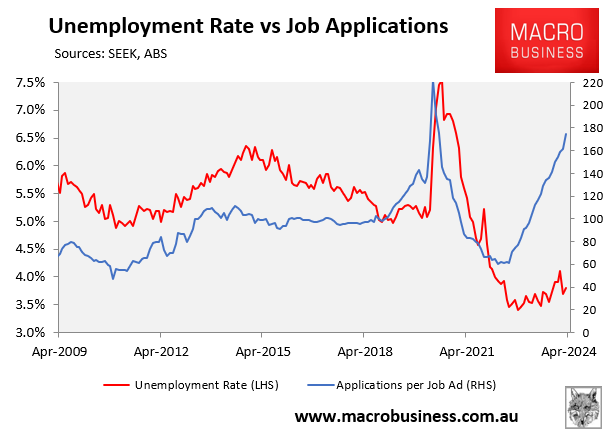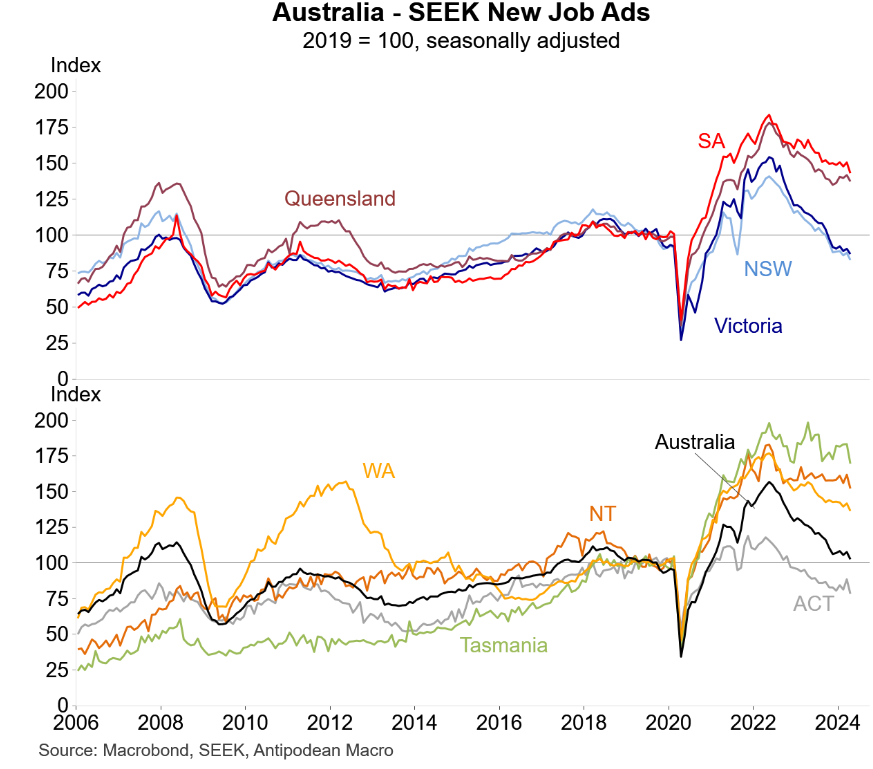I spoke with Clinton Maynard of Radio 2GB on Thursday morning about the softening economic indicators, including the dramatic deterioration of the labour market.
Edited Transcript:
On Wednesday, Seek released their monthly labour market report. That is, the number of job ads, which is effectively employers demand for workers, and also the number of applications per job ad.

It is a function of two things: the number of job ads, but also the number of people applying for those job ads.
Both of those series are going the wrong way. The number of job ads across Australia has fallen very severely. It is back down to early 2021 levels.
It tells you that the demand from employers for workers is falling. At the same time, the number of applicants for those jobs is rocketing because of this very high immigration.

We are importing workers hand over fist at record rates, and and those people are now competing for fewer jobs.
Seek’s data shows that the number of applicants per job ad has soared way above where it was pre-pandemic.
This series has historically tracked very closely with the unemployment rate. But for some reason, in the last six months, it has decoupled from unemployment rates.

The official unemployment rate was 3.9%, but Seek’s job applications per job ad series has rocketed way above pre-pandemic levels. And I expect those two series to normalise and unemployment to jump very sharply.
There is just no way you can have that many people competing for a smaller pool of jobs and not see unemployment rise.
So, I think the ABS labour market series is actually the outlier here. There are some survey issues at the moment where, not just in Australia but around the world.
The official employment agencies are having trouble measuring the very high immigration in places like Australia, New Zealand, Canada, Etc. And that is potentially leading them to understate what the true level of unemployment is.
The migrant epicentres of New South Wales and Victoria are facing the biggest rise in unemployment.
Seek’s job ad series showed that in New South Wales and Victoria, their job ads have collapsed back to 2019 levels.

They are leading the decline in job ads at the same time that both of those jurisdictions are receiving most of the migrants.

New South Wales received 186,000 net migrants in the year of to September and Victoria received 162,000.
This huge volume of migrants that are coming in New South Wales and Victoria are obviously competing for a lot fewer jobs.
As a result, the number of applicants per job ad in New South Wales and Victoria has climbed about 75% above pre-pandemic levels.

So, they are actually leading the nation, which is really bad news if you are from those states.
The data is pointing to even heavier job losses in New South Wales and Victoria than the national average.

